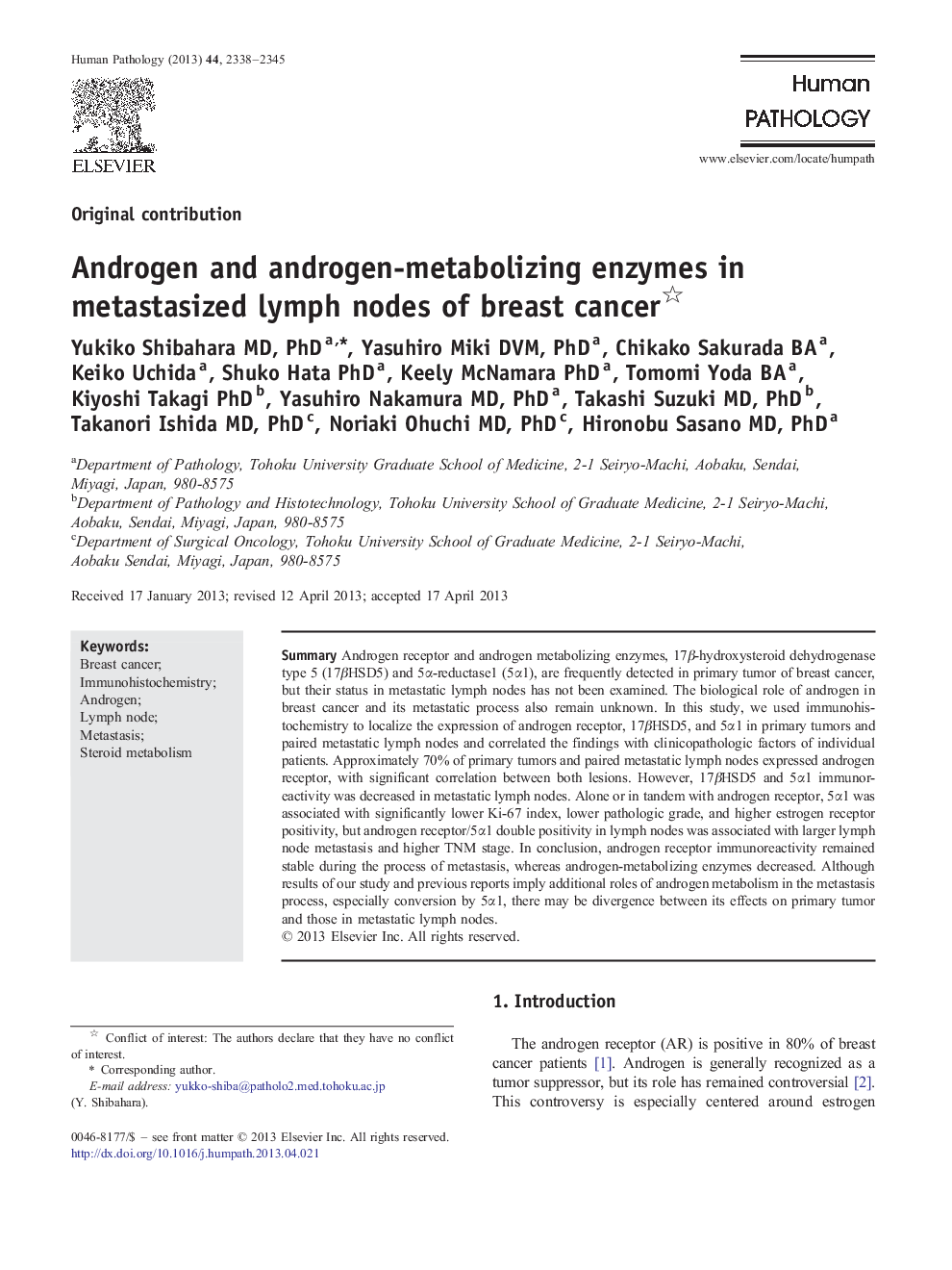| Article ID | Journal | Published Year | Pages | File Type |
|---|---|---|---|---|
| 4133229 | Human Pathology | 2013 | 8 Pages |
SummaryAndrogen receptor and androgen metabolizing enzymes, 17β-hydroxysteroid dehydrogenase type 5 (17βHSD5) and 5α-reductase1 (5α1), are frequently detected in primary tumor of breast cancer, but their status in metastatic lymph nodes has not been examined. The biological role of androgen in breast cancer and its metastatic process also remain unknown. In this study, we used immunohistochemistry to localize the expression of androgen receptor, 17βHSD5, and 5α1 in primary tumors and paired metastatic lymph nodes and correlated the findings with clinicopathologic factors of individual patients. Approximately 70% of primary tumors and paired metastatic lymph nodes expressed androgen receptor, with significant correlation between both lesions. However, 17βHSD5 and 5α1 immunoreactivity was decreased in metastatic lymph nodes. Alone or in tandem with androgen receptor, 5α1 was associated with significantly lower Ki-67 index, lower pathologic grade, and higher estrogen receptor positivity, but androgen receptor/5α1 double positivity in lymph nodes was associated with larger lymph node metastasis and higher TNM stage. In conclusion, androgen receptor immunoreactivity remained stable during the process of metastasis, whereas androgen-metabolizing enzymes decreased. Although results of our study and previous reports imply additional roles of androgen metabolism in the metastasis process, especially conversion by 5α1, there may be divergence between its effects on primary tumor and those in metastatic lymph nodes.
